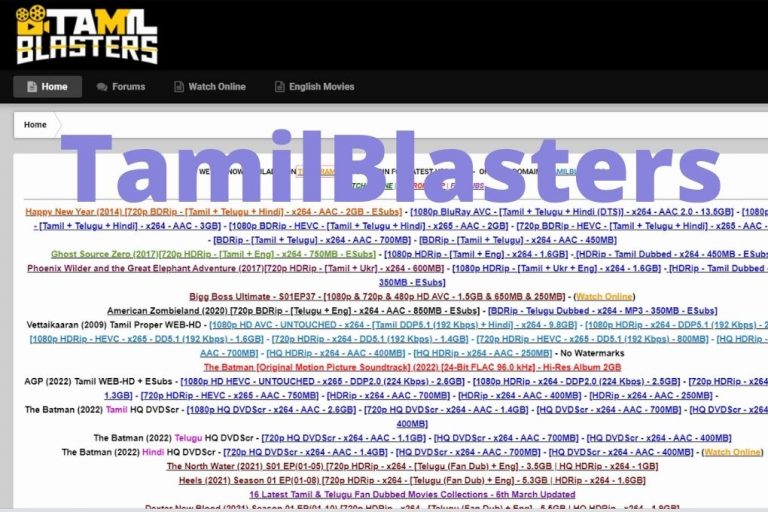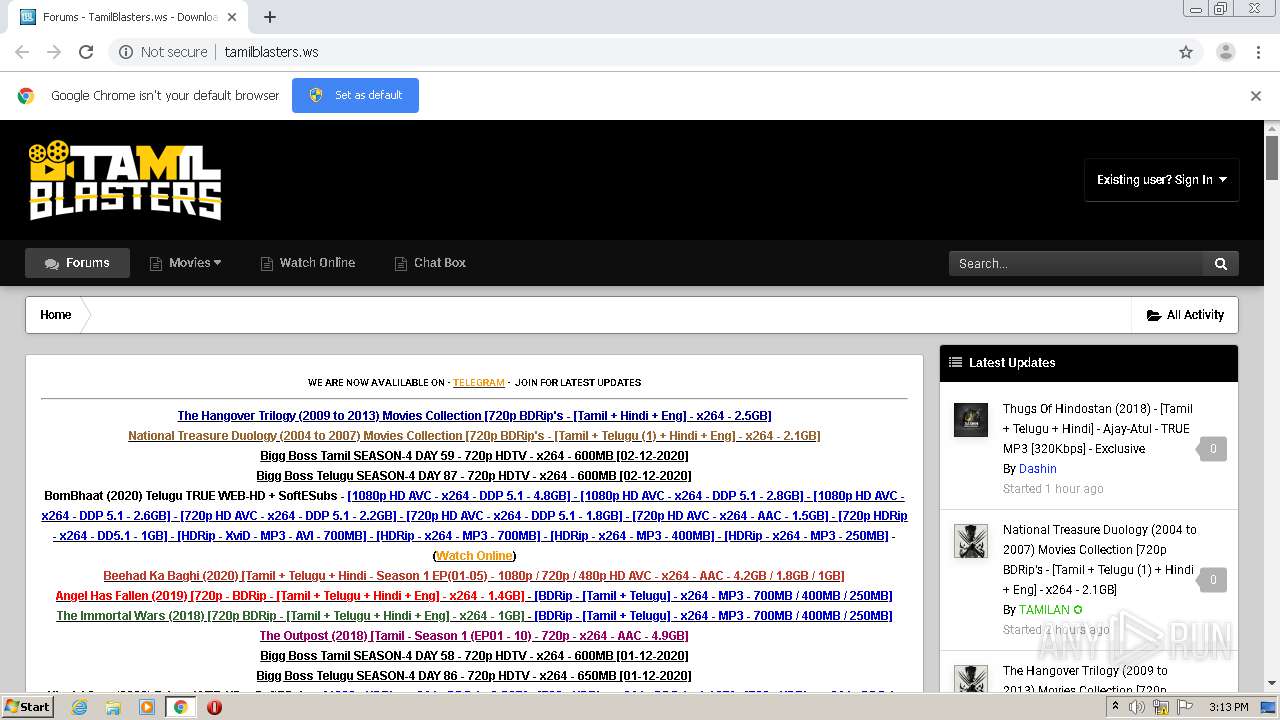TamilBlasters: Everything You Need To Know + Alternatives
Is the allure of free movies a siren song leading to troubled waters? The proliferation of websites offering pirated content, like those associated with the "Tamilblasters" phenomenon, raises serious questions about legality, ethics, and the future of the entertainment industry.
The digital age has undeniably revolutionized how we consume entertainment. Streaming services have become ubiquitous, offering vast libraries of content at our fingertips. Yet, alongside these legitimate platforms, a shadow industry thrives: websites that illegally distribute copyrighted material. Among these, platforms offering access to Tamil movies and other regional content have gained considerable traction, particularly in regions where legal streaming options were initially limited or expensive. One such platform, the one under discussion, emerged in the early 2010s, capitalizing on the burgeoning demand for online entertainment in South India, where piracy was widespread due to various factors including the accessibility of content and affordability. The rise of this and similar sites coincided with a period of rapid internet penetration and evolving consumer habits, making it easier than ever to access movies online.
However, accessing content from such platforms raises several ethical concerns. Piracy undermines the financial viability of the film industry, depriving filmmakers, actors, and all those involved in the creative process of their rightful compensation. It also fuels a black market that can be linked to other illicit activities. Moreover, the quality of content offered on these sites is often unreliable, with security risks associated with downloading from unknown sources. Given this landscape, it's important to scrutinize the implications before engaging with such platforms.
Understanding the Rise of "1Tamilblasters"
The journey of "1Tamilblasters" reflects the broader dynamics of online piracy. Initially, the site, or rather the concept, gained popularity by offering free access to a wide selection of Tamil movies. It quickly became a go-to destination for movie enthusiasts, especially in areas where access to cinema was limited or expensive. The site's model was simple: offering a vast library of films, often shortly after their theatrical release, for free download. This model, while appealing to users, operated in direct violation of copyright laws, leading to an ongoing cat-and-mouse game between the site operators and authorities.
The site's appeal was multifaceted. Firstly, it provided immediate access to new releases, bypassing the traditional waiting periods associated with theatrical releases or the arrival of films on legal streaming platforms. Secondly, it catered to a niche audience, focusing specifically on Tamil cinema, which was sometimes underserved by mainstream streaming services. The convenience and accessibility made the website a popular choice for users who could not or did not want to pay for content.
Over time, the site, like many of its counterparts, adopted various strategies to maintain its presence in the digital space. This included changing domain names, utilizing proxy servers, and leveraging social media platforms to circumvent blocking efforts. The ongoing battle with authorities highlights the challenges faced by rights holders and the complex nature of online piracy.
- Snoh Aalegras Husband Unveiling The Mystery Her Life
- Chris Youngs Wife Unveiling The Truth Untold Stories
The platform, much like its competitors, did not limit itself to a single format or quality. It frequently offered movies in multiple resolutions, including 720p, 1080p, and even 4K, catering to a wide range of user devices and internet speeds. This made the platform attractive to a broad audience, irrespective of their technological capabilities. Moreover, the availability of content in various formats allowed users to choose the download option that best suited their preferences and available bandwidth. In addition to Tamil movies, the platform offered access to films in other South Indian languages such as Telugu, Malayalam, and Kannada, as well as Hindi and English movies.
The ease of use was another factor contributing to the site's popularity. Users could often find the latest movies with minimal effort, and the download process was designed to be straightforward. These factors, coupled with the lack of subscription fees, cemented its status as a preferred destination for those seeking free movie downloads.
The operational structure of these sites is often complex, involving multiple layers of technology and personnel. The core function is to obtain copyrighted content, typically through camcording (recording films in theaters) or by procuring digital copies. This content is then uploaded to servers, sometimes using cloud storage services or content delivery networks (CDNs) to ensure high availability and fast download speeds. The sites themselves are frequently hosted in jurisdictions where copyright laws are not as strictly enforced or where legal challenges are more difficult to pursue.
The websites rely on advertising revenue to fund their operations. Advertisements, often intrusive and sometimes containing malicious software, generate income for the site owners. The more traffic a site attracts, the more lucrative the advertising revenue. This financial incentive fuels the cycle of piracy, making it a persistent issue.
The constant crackdown on piracy and illegal streaming sites presents an ongoing challenge. Domain names are frequently taken down by authorities, and websites must adapt by finding alternative means of distribution. Proxy sites and mirror sites are common solutions, acting as alternative entry points to the same content. The operators also turn to social media channels and messaging apps like Telegram to communicate with their user base.
Ethical and Legal Considerations
Engaging with websites such as these entails a complex interplay of ethical and legal implications. From a legal perspective, accessing and distributing copyrighted material without permission is a violation of copyright law. Copyright holders have the exclusive right to control how their work is distributed, and unauthorized downloads constitute infringement. The penalties for copyright infringement can range from civil lawsuits to criminal prosecution, depending on the jurisdiction and the extent of the violation.
The ethical dimension of using these sites is equally significant. Downloading movies from them amounts to the theft of intellectual property, depriving filmmakers and other creatives of their revenue. These funds are essential for the survival and ongoing development of the film industry. The rise of free content websites has led to a decline in the film industry.
There are considerable risks associated with using these sites. The download process can expose users to malware and viruses. The sites themselves are known to host malicious software, which can compromise a user's device and steal personal information. The security risks are a major deterrent for the use of free content streaming. In addition, the reliability of the content is questionable. The quality of the films may vary greatly, and the download process is sometimes interrupted.
The Impact on the Film Industry
The impact of piracy on the film industry is multifaceted. The most immediate consequence is the financial loss suffered by filmmakers, distributors, and other industry professionals. Revenue streams are diverted away from legal channels. This reduction in income limits the investment in future projects, reduces the potential for creative innovation, and affects the ability of the industry to provide jobs. Film production becomes more challenging, which can lead to a lower number of movies being made each year.
The effects of piracy are not limited to monetary losses. It can also undermine the value of film as an art form. When content is available for free, the perceived value of the film decreases, which can impact the willingness of audiences to pay for legitimate viewing options. The industry's ability to promote and distribute its products is affected. The spread of unauthorized content can diminish the success of theatrical releases, impacting the revenue generated from box office sales.
The rise of online piracy has prompted efforts by rights holders and industry organizations to combat the problem. These efforts include legal actions against pirate sites, lobbying for stricter copyright laws, and the development of technological solutions. These groups are also focusing on promoting the benefits of legal streaming services. There is a constant battle being fought between the film industry and the illegal distribution networks.
Alternatives and the Future of Entertainment
Fortunately, there are numerous ways to enjoy movies and other forms of entertainment without resorting to piracy. Several legitimate streaming services offer vast libraries of movies and TV shows, with new content added regularly. These platforms provide access to a wide range of genres and languages. Furthermore, the quality is typically high, and the user experience is seamless.
Legal downloading options are also available. Services like iTunes and Amazon provide users with the opportunity to purchase or rent movies. These downloads are typically DRM-protected, ensuring that the content is only accessible on authorized devices. These platforms offer convenience and ensure that the content is secure.
The future of entertainment hinges on the success of legal streaming services. The industry is investing heavily in new, innovative content, with the aim of attracting and retaining subscribers. The growth of streaming platforms has led to an increase in subscription fees.
Staying Safe Online
When browsing the internet, it is important to follow safety guidelines. The use of a VPN can encrypt your internet traffic. It is advisable to avoid clicking on suspicious links or downloading files from untrusted sources. The use of a robust antivirus program helps detect and remove malware. Always keep your software updated and use strong passwords.
In the evolving landscape of digital entertainment, it's crucial to approach content consumption with awareness and discernment. While the appeal of free access to movies is undeniable, it is important to be mindful of the legal, ethical, and security implications. Supporting the film industry by choosing legal streaming and downloading options promotes a healthier, more sustainable ecosystem.
- Lamine Yamals Family Brother Sister More Latest News
- Laura Govan Wiki Kids Husband More Latest Updates

TamilBlasters Bid Movie Download The Ultimate Guide To Smart Downloads

O que é Tamilblasters Proxy? Guia para Desbloquear Tamilblasters Proxy

சினிமாக்குத்தூசி on Twitter " tamilrockers இப்போ tamilblasters ங்ற